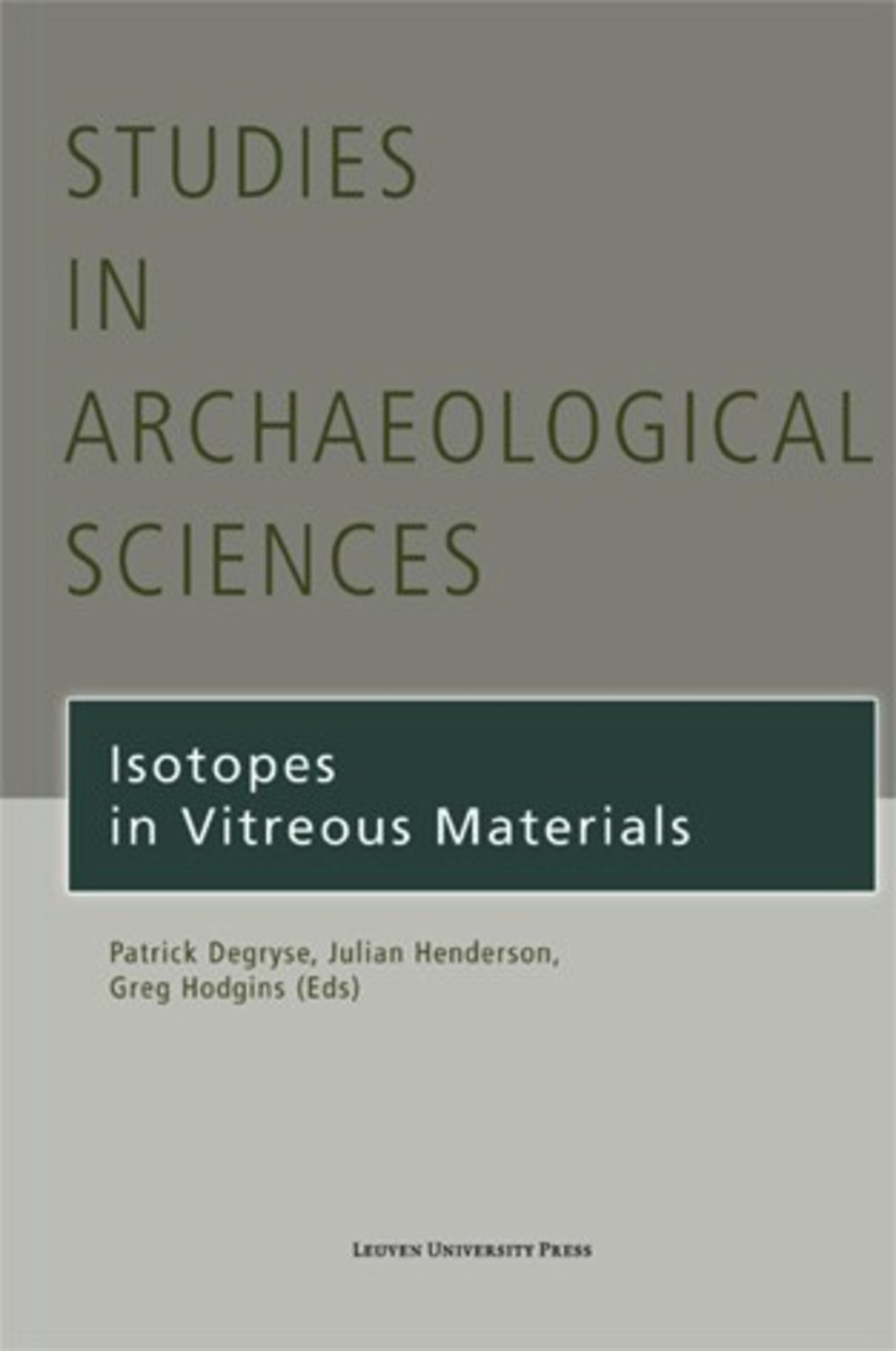
Isotopes in Vitreous Materials
Edited by Patrick Degryse, Julian Henderson, and Greg Hodgins
Regular price
€53.00
(including 6% VAT)
Sale
Edited volume - ebook - PDF
VIEW Edited volume - hardbackList of Illustrations
List of Tables
P. Degryse, J. Henderson, G. Hodgins, Isotopes in vitreous materials, a state-of-the-art and perspectives
I.C. Freestone, S. Wolf, M. Thirlwall, Isotopic composition of glass from the Levant and the south-eastern Mediterranean Region
P. Degryse, J. Schneider, V. Lauwers, J. Henderson, B. Van Daele, M. Martens, H. Huisman, D. De Muynck, P. Muchez, Neodymium and strontium isotopes in the provenance determination of primary natron glass production
J. Henderson, J. Evans, Y. Barkoudah, The provenance of Syrian plant ash glass: an isotopic approach
A.J. Shortland, The implications of lead isotope analysis for the source of pigments in Late Bronze Age Egyptian vitreous materials
D. Dungworth, P. Degryse, J. Schneider, Kelp in historic glass: the application of strontium isotope analysis
P. Marzo, F. Laborda, J. Pérez-Arantegui, Medieval and postmedieval Hispano-Moresque glazed ceramics: new possibilities of characterization by means of lead isotope ratio determination by Quadrupole ICP-MS 131
M.S. Walton, PLS regression to determine lead isotope ratios of Roman lead glazed ceramics by laser ablation TOF-ICP-MS 145
List of Authors
The Editors
Format: Edited volume - ebook - PDF
166 pages
ISBN: 9789461660510
Publication: March 20, 2013
Series: Studies in Archaeological Sciences 1
Languages: English
Greg Hodgins is an Assistant Research Scientist and an Assistant Professor of Anthropology at the National Science Foundation - Arizona Accelerator Mass Spectrometry Laboratory, University of Arizona, Tucson, AZ, USA.
Julian Henderson is Professor of Archaeological Science at the department of Archaeology, School of Humanities, at the University of Nottingham, UK.
Patrick Degryse is professor of geochemistry at the Department of Earth and Environmental Sciences, KU Leuven, and professor of archaeometry at the Faculty of Archaeology, Leiden University.
This volume is a welcome and needed synthesis of isotopic analyses of inorganic vitreous archaeological materials. Discussions in various chapters on the history of the use of recent isotopic analysis of archaeological materials are very useful and make this book invaluable to scholars and students needing to understand some basics. Provenance, an important question for archaeologists, was adequately addressed in nearly all chapters.
Reviewed by Thomas R. Fenn, School of Anthropology, University of Arizona, Tucson for Journal of Field Archaeology 2011 VOL. 36 NO. 1
This volume is a welcome and needed synthesis of isotopic analyses of inorganic vitreous archaeological materials. Discussions in various chapters on the history of the use of recent isotopic analysis of archaeological materials are very useful and make this book invaluable to scholars and students needing to understand some basics. Provenance, an important question for archaeologists, was adequately addressed in nearly all chapters.
Reviewed by Thomas R. Fenn, School of Anthropology, University of Arizona, Tucson for Journal of Field Archaeology 2011 VOL. 36 NO. 1
